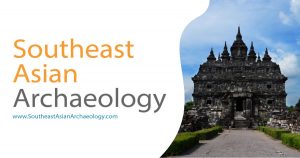via New Mandala, 09 November 2020: An interesting piece by Alexandra Kent on how changing economic situations are also changing long-held beliefs about the neak ta or local spirits.
When Theravada Buddhism spread throughout Cambodia in the 13th century, it subsumed but did not eclipse pre-existing spirit worshipping practices. Despite the cultural divergence between the lowland Khmer majority and highland minority groups, they continued sharing a concern for the spirits controlling the resources on which they depended. In this cosmological system, the power of the source of all life—generally known as the maja tuk maja day (literally owner of the water and land)—manifested in specific forms, such as rivers, mountains, trees, rocks, great ancient trees, peculiarly shaped rock formations, termite stacks, wooden linga and more. The term neak ta (or lok ta) is used to refer to these spirit forms. A neak ta may appear in the form of phenomena such as tutelary spirits that protect specific communities, or as human ancestors and deceased heroes.
Often, a neak ta relates to the establishment of a specific settlement and is, in this sense, foundational. Some neak ta take anthropomorphic form and arise within a historical narrative. Stories abound of how ancient heroes protected the integrity of the Khmer realms while alive, and continued to do so as spirits after their deaths. Particularly in urban settings—for example, outside courtrooms or alongside major roads—one may find humanoid statues of historical figures such as Neak Ta Kor Krohom. This figure appears all over the country, woven into local legends of a deceased powerful figure.
These spirits articulate a variety of relationships: relations between people within the community, relations between the living and the dead, and relations between people and the environment—particularly when it comes to resource utilisation. Traditionally, when treated with respect, the neak ta responded by protecting and providing for communities and their members. However, when neglected or when the environment they ‘owned’ was transgressed, they could respond in wrath, striking people down with illness, flooding or depriving communities of rainfall and therefore food, withholding game animals during hunts, causing accidents, sterility and all manner of misfortune.
Historically, the ideal Khmer Buddhist sovereign was supposed to be possessed of virtuous power known by the Buddhist term parami. He achieved this by practising the ten kingly Buddhist virtues known as desarajadhamma. Many Cambodians in their forties and older, having grown up without television or even electricity, recall hearing their parents tell allegorical tales of the relationship between the ruler’s virtue and the welfare of both the human and non-human realms. One man in his forties told me that when criticising the current regime, he and his friends may refer to a story of an ancient ruler King Senakak Reach (the ‘Gangster King’), who took the throne illegitimately, then ruled with greed and cruelty. The King’s immoral behaviour enraged not only the people, but also the spirits. As punishment for the King’s misdeeds, the waters flooded the lands, forcing the King to flee, drowning people and causing diseases to spread.
The idea that rulers who fail to exercise virtuous power in respecting and caring for the environment ultimately unleash environmental catastrophe remains salient today. Unlike the supremely virtuous powers associated with the Buddhist sovereign, the neak ta are susceptible to corruption and co-optation. They share many characteristics with living people and their existence depends on human succour. They may favour the increasingly generous rich over the poor who, in the predatory and competitive world of consumerism, have less and less to offer them. Many claim that the spirits are deserting rural people, and that Cambodian villagers are equally forsaking the spirits of the land by adopting the new ethic and joining the rush for consumption. Others say these spirits have been bribed and corrupted by the enormous wealth accumulated by the new Cambodian elites.

























